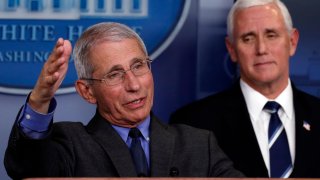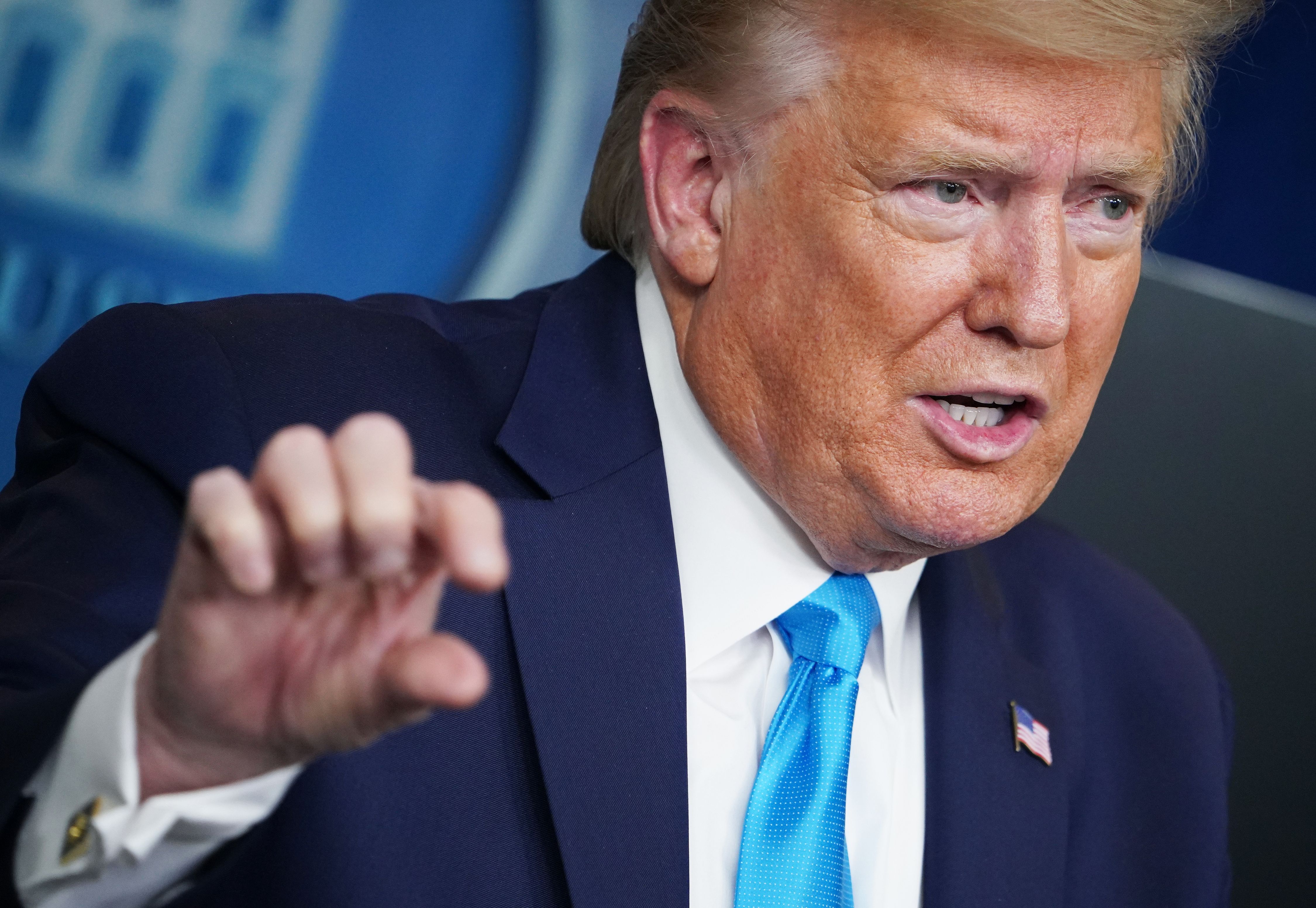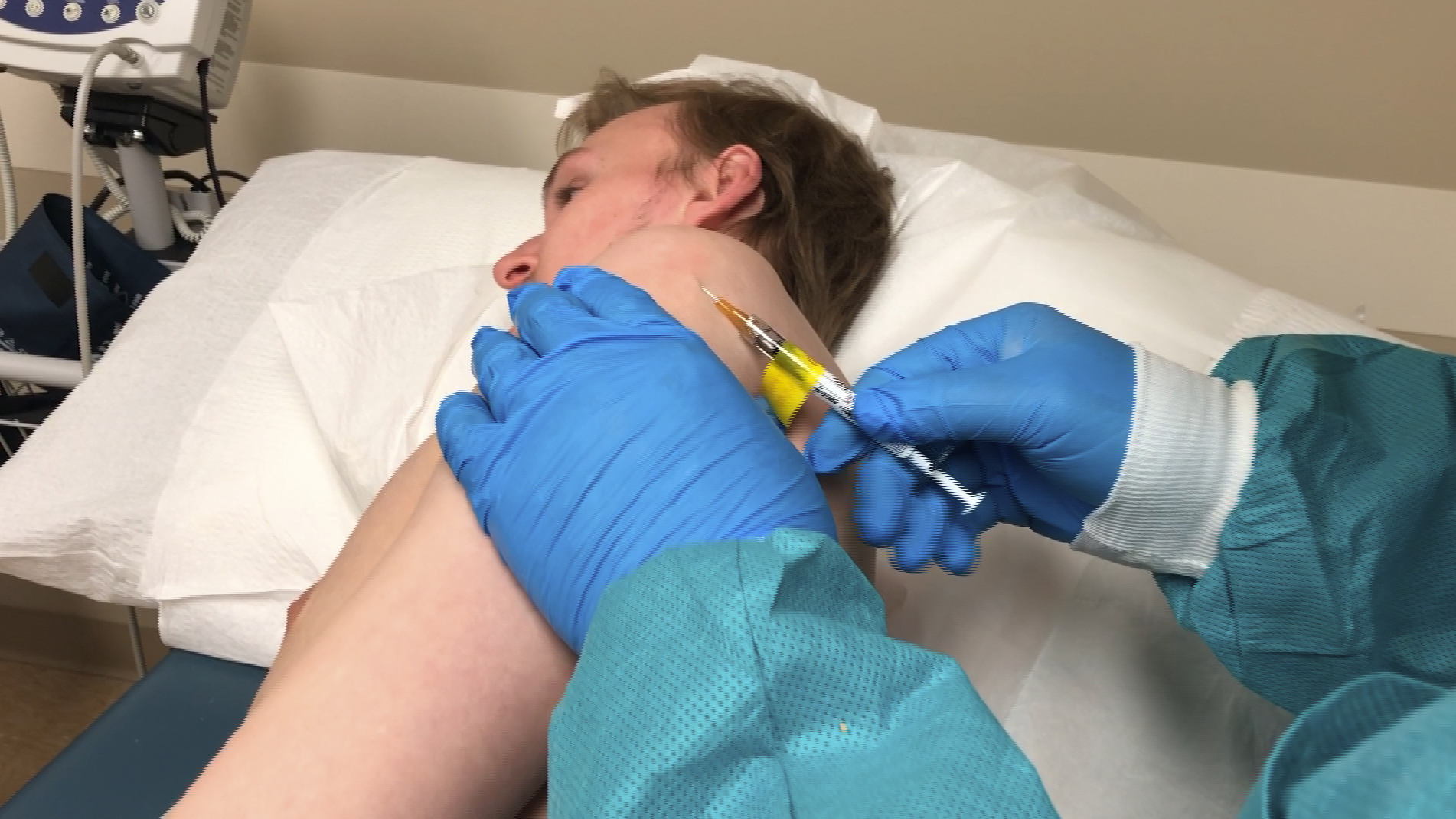
In a first, small step toward reopening the country, the Trump administration issued new guidelines Wednesday to make it easier for essential workers who have been exposed to COVID-19 to get back to work if they do not have symptoms of the coronavirus.
Dr. Robert Redfield, director of the the Centers for Disease Control and Prevention, announced at the White House that essential employees, such as health care and food supply workers, who have been within 6 feet of a confirmed or suspected case of the virus can return to work under certain circumstances if they are not experiencing symptoms.
The new guidelines are being issued as the nation mourns more than 14,000 deaths from the virus and grapples with a devastated economy and medical crises from coast to coast. Health experts continue to caution Americans to practice social distancing and to avoid returning to their normal activities. At the same time, though, they are planning for a time when the most serious threat from COVID-19 will be in the country’s rear-view mirror.
President Donald Trump said that while he knows workers are “going stir crazy” at home, he can't predict when the threat from the virus will wane.
"The numbers are changing and they’re changing rapidly and soon we’ll be over that curve. We’ll be over the top and we’ll be headed in the right direction. I feel strongly about that," Trump said about the coronavirus, which he called "this evil beast."
Coronavirus Pandemic Coverage
"I can’t tell you in terms of the date," Trump said, adding cases could go down and then once again "start going up if we’re not careful."
At some point, he said at his daily briefing, social distancing guidelines will disappear and people will be able to sit together at sports events. "At some point we expect to be back, like it was before," he said.
Dr. Anthony Fauci, the nation’s top infectious disease expert, said if the existing guidelines asking people to practice social distancing through the end of April are successful in halting the spread of the virus, more relaxed recommendations could be in order.
He said the White House task force was trying to dovetail public health concerns with practical steps that need to be in place when the 30-day guidelines end at the end of the month so the nation can "safely and carefully march toward some sort of normality."
If, by fall, things start to return to normal, Americans will still need to wash their hands frequently, sick schoolchildren should be kept home and people with fevers need to refrain from going to work, Fauci said during an online interview Wednesday with the editor of the Journal of the American Medical Association.
People also should never shake hands again, Fauci said, only half-jokingly.
"I mean it sounds crazy, but that’s the way it’s really got to be," he said. "Until we get to a point where we know the population is protected" with a vaccine.
Under the new guidelines for essential workers, the CDC recommends that exposed employees take their temperatures before their shifts, wear face masks and practice social distancing at work. They also are advised to stay home if they are ill, not share headsets or other objects used near the face and refrain from congregating in crowded break rooms.
Employers are asked to take exposed workers’ temperatures and assess symptoms before allowing them to return to work, aggressively clean work surfaces, send workers home if they get sick and increase air exchange in workplaces.
Fauci said he hoped the pandemic would prompt the U.S. to look at long-term investments in public health, specifically at the state and local level. Preparedness that was not in place in January needs to be in place if or when COVID-19 or another virus threatens the country.
"We have a habit of whenever we get over a challenge, we say, ‘OK, let’s move on to the current problem,'" he said. "We should never, ever be in a position of getting hit like this and have to scramble to respond again. This is historic."
Even the new guidelines will not be a foolproof guard against spreading infection.
Recent studies have suggested that somewhere around 10% of new infections might be sparked by contact with individuals who are infected but do not yet exhibit symptoms. Scientists say it’s also possible that some people who develop symptoms and then recover from the virus remain contagious, or that some who are infected and contagious may never develop symptoms.
As of Wednesday, the U.S. had more than 400,000 confirmed cases of infection.
On the other side of the globe, the journey back to normalcy is further along.
In Wuhan, the Chinese industrial city that first reported cases of the new coronavirus, authorities ended a 76-day lockdown Wednesday. Residents can travel in and out of the city without special authorization, but must use a smartphone app showing they are healthy and have not been in recent contact with anyone confirmed to have the virus.
Trump's predecessor, Barack Obama, chimed in with a cautionary tweet from the sidelines, writing: "Social distancing bends the curve and relieves some pressure on our heroic medical professionals. But in order to shift off current policies, the key will be a robust system of testing and monitoring — something we have yet to put in place nationwide."
Conservative voices, for their part, are pushing for an economic and social restart, urging Trump to overrule health officials.
"At some point, the president is going to have to look at Drs. Fauci and Birx and say, we’re opening on May 1," Fox commentator Laura Ingraham tweeted. "Give me your best guidance on protocols, but we cannot deny our people their basic freedoms any longer."
For most people, the new coronavirus causes mild or moderate symptoms, such as fever and cough that clear up in two to three weeks. For some, especially older adults and people with existing health problems, it can cause more severe illness, including pneumonia, and death.
AP Medical Writer Lindsey Tanner in Chicago contributed to this report. Stobbe reported from New York.



